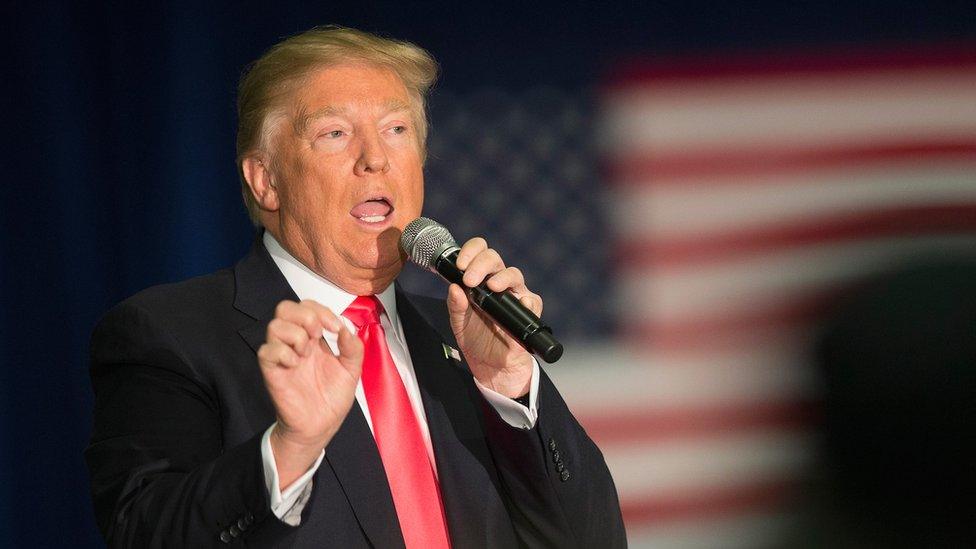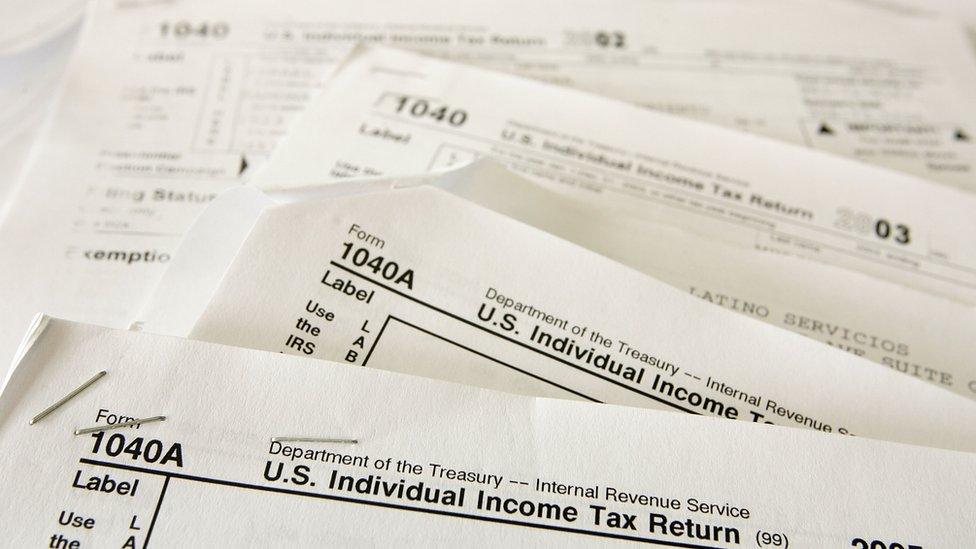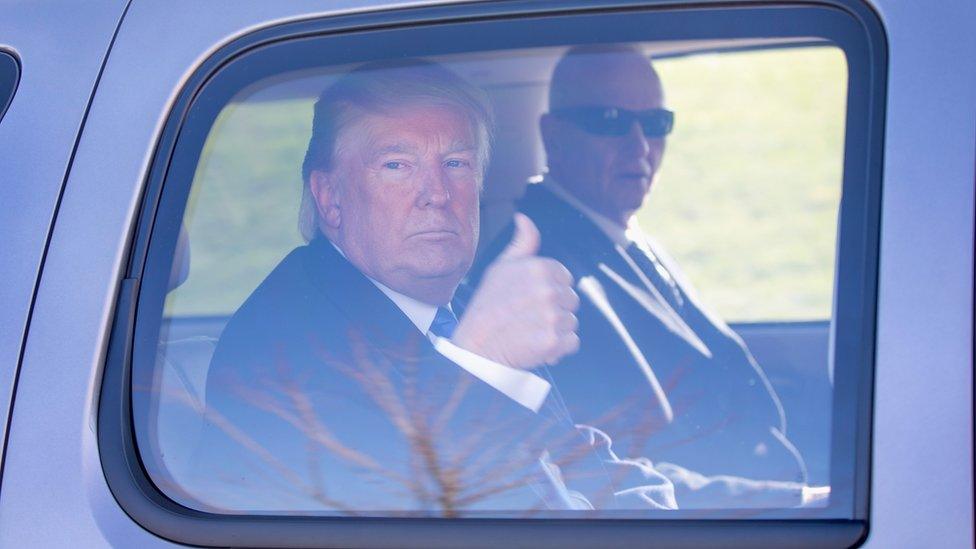US election: Could Trump really cut the US $19tn debt in eight years?
- Published

Donald Trump's policy proposals have generated a lot of headlines over the course of his presidential campaign. But none has made economists shriek more than the Republican front-runner's suggestion that he could eliminate US government debt in eight years.
Official US public debt is over $19tn (£13.4tn) - this accounts for the amount of money the government has borrowed through treasury and saving bonds.
Since the US government is borrowing more than it brings in through taxes in order to pay its bills - including the servicing of this debt- it is running on a deficit.
Economists argue over this figure, saying the debt level could be much higher, if the government included the money it owes itself for running federal programmes.
To eliminate the public debt in eight years, a potential President Trump would need to come up with an extra $2.4tn a year either through spending cuts or tax increases.

How Trump intends to clear the debt
Trump campaign spokesman Barry Bennett said the debt could be wiped by selling government assets, including government buildings, land and energy resources. He claims this could bring in $16tn.
According to the US Government Accountability Office, though, the federal government only owns $3.1tn in assets. This does not include natural resources or stewardship assets.
To get close to Mr Bennett's figure, Americans would have to give up all their national parks, and sell the natural resources on public land including timber and minerals.
The country would also have to sell energy reserves like offshore oil and hope the price of that oil - which has fallen over 70% since June 2014 - starts rising.

Can he do it by other means?
Deficit hawks, who have decried politicians for ignoring the country's ever mounting debt burden, rose up to point out that although the US needs to address this problem, Mr Trump's overall economic plan on tax and spending would actually take the country in the opposite direction.
"If he does what he proposes to do, in eight years the fiscal gap will be even bigger," say Laurence Kotlikoff, professor of economics at Boston University.
According to the Committee for a Responsible Federal Budget - a cross-party group - Mr Trump's economic plan would double the national debt, with it growing naturally to a $28tn deficit by 2026, plus another $10tn from the spending and tax cuts Mr Trump has proposed.

Trump and taxes

Mr Trump has put forward a tax plan that would charge individuals between 0% and 25% tax based on income and cut the corporate tax rate in half to 15%.
He has said this will lead to economic growth as more companies open in the US and individuals spend more money they don't have to give to the taxman.
Mr Trump claims his plan will not add to the national deficit because cuts will be offset by closing tax loopholes. But economists predict his tax plan could reduce the money coming into the federal government by between $9.5tn and $12tn.
"With Trump's tax plan there is no way we could get to a balanced budget in eight years," says Ron Haskins from Brookings Institute.

Spending cuts
All economists agree that, to get the US budget balanced, some harsh spending cuts would be required.
But according to the CRFB, under Mr Trump's proposed plan, 96% of government spending would need to be eliminated.
The outspoken candidate has ruled out any cuts to Social Security - the government pension programme. It accounts for the largest portion of US government spending.
He has pledged to reduce the cost of Medicaid - the government sponsored healthcare programme and the US government's second largest expense - by $300bn through reduced prescription drug costs.
The US public as a whole, including Medicaid, spent just over that amount - $374bn- on prescription drugs in 2015. For Mr Trump to save that amount of money he would need to reduce Medicaid's drug bill to zero.

To balance the US budget with his tax plan Donald Trump would need to cut 96% of government spending
Mr Trump has also said he would save money by lowering the number of people on Medicaid by creating more jobs. But most recipients of the government healthcare programme are already employed in low-paying jobs.
Like many other politicians, Mr Trump has said his administration would cut waste and fraud, saving the US government billions.
Most economists agree this is necessary, but waste and fraud make up such a small percentage of the national debt that this alone could never lead to a balanced budget.

Could he increase economic growth to clear the debt?

The real key to Mr Trump's plan seems to be boosting the economy, which he has promised to accomplish by renegotiating trade deals.
On his campaign website though, he lists cutting the debt as integral to that negotiation process. "Closing the deficit and reducing our debt will mean China cannot blackmail us with our own Treasury bond," the website says.
It's unclear which comes first - cutting the debt to boost the US position in trade negotiations or renegotiating to boost the economy and bring down the debt.
According to Mr Haskins, boosting the economy is one way to cut the deficit but "it would require an unprecedented amount of growth" - perhaps as high as 20%.
That is assuming, too, that Mr Trump's insistence on renegotiating trade deals does not lead to a trade war and a decline in the US economy, as some economists have suggested might happen.
All told, it is unlikely that any of the plans Mr Trump has proposed will cut the national debt, according to experts. They would more likely increase it.

More on the Trump campaign
Who are the women who support Trump?
A huge cost - Could Trump really deport every undocumented migrant?
Katty Kay - Trump's disastrous women voter problem
Trump's foreign policy - Brilliant or bluster?
Cruz v Trump v Reagan - Who is most right-wing?
